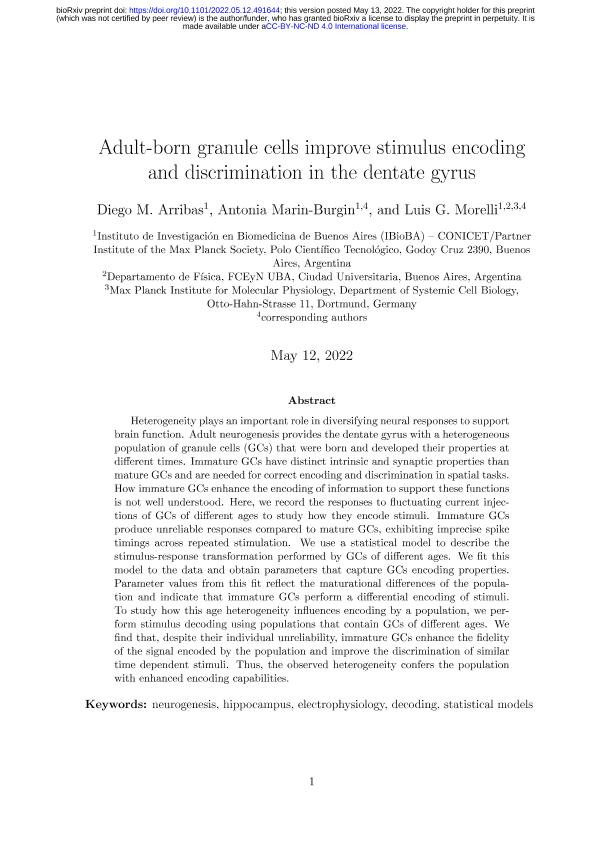Artículo
Adult-born granule cells improve stimulus encoding and discrimination in the dentate gyrus
Fecha de publicación:
09/2022
Editorial:
Cold Spring Harbor Laboratory Press
Revista:
BioRxiv
ISSN:
2692-8205
Idioma:
Inglés
Tipo de recurso:
Artículo publicado
Clasificación temática:
Resumen
Heterogeneity plays an important role in diversifying neural responses to support brain function. Adult neurogenesis provides the dentate gyrus with a heterogeneous population of granule cells (GCs) that were born and developed their properties at different times. Immature GCs have distinct intrinsic and synaptic properties than mature GCs and are needed for correct encoding and discrimination in spatial tasks. How immature GCs enhance the encoding of information to support these functions is not well understood. Here, we record the responses to fluctuating current injections of GCs of different ages to study how they encode stimuli. Immature GCs produce unreliable responses compared to mature GCs, exhibiting imprecise spike timings across repeated stimulation. We use a statistical model to describe the stimulus-response transformation performed by GCs of different ages. We fit this model to the data and obtain parameters that capture GCs encoding properties. Parameter values from this fit reflect the maturational differences of the population and indicate that immature GCs perform a differential encoding of stimuli. To study how this age heterogeneity influences encoding by a population, we perform stimulus decoding using populations that contain GCs of different ages. We find that, despite their individual unreliability, immature GCs enhance the fidelity of the signal encoded by the population and improve the discrimination of similar time dependent stimuli. Thus, the observed heterogeneity confers the population with enhanced encoding capabilities.
Palabras clave:
ADULT NEUROGENESIS
,
HIPPOCAMPUS
,
MODELING
,
ELECTROPHYSIOLOGY
Archivos asociados
Licencia
Identificadores
Colecciones
Articulos(IBIOBA - MPSP)
Articulos de INST. D/INV.EN BIOMED.DE BS AS-CONICET-INST. PARTNER SOCIEDAD MAX PLANCK
Articulos de INST. D/INV.EN BIOMED.DE BS AS-CONICET-INST. PARTNER SOCIEDAD MAX PLANCK
Citación
Arribas, Diego Martín; Marin Burgin, Antonia; Morelli, Luis Guillermo; Adult-born granule cells improve stimulus encoding and discrimination in the dentate gyrus; Cold Spring Harbor Laboratory Press; BioRxiv; 2022; 9-2022; 1-28
Compartir
Altmétricas




